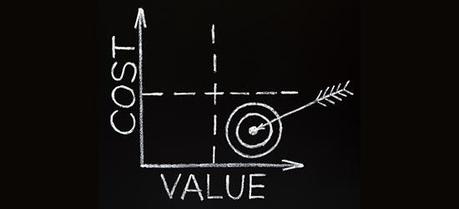
The purpose of psychometric testing is to measure job-related traits of applicants to help predict their future performance and assess their suitability for roles. To do this properly, organisations must use psychometric tests that are reliable (i.e. consistent in measurement) and valid (i.e. measure what they purport to measure). But how do you know if it is actually effective? The answer is to calculate the return on investment (ROI), as you’d normally do for any major business initiative.
What is Return on Investment (ROI)?
Return on Investment, or ROI for short, is a measure used to evaluate the efficiency of an investment. To calculate ROI, you divide the benefit (return) of an investment by the cost of the investment and express the result as a percentage or a ratio.
The formula is:
If the result is positive, then your investment has earned more than it cost. If the result is negative then you’re effectively worse off than you would have been had you never made that investment.
It is important that you measure the ROI associated with psychometric testing to ensure it is contributing to the bottom line, as you should do for any other major business initiative.
Measuring the ROI of Psychometric Testing
In order to calculate ROI you first need to quantify the Cost of Investment and the Gains from the investment. Importantly, these must be expressed in dollar terms rather than common HR metrics.
Cost of Investment
The cost of investment is straightforward to calculate and should include both direct and indirect costs.
The direct cost is everything you pay to your psychometric testing supplier or consultant, which typically includes:
- Set up and customisation
- Training
- Psychometric tests
- Report interpretation, and
- Consulting.
Indirect costs are a little more difficult to calculate as they are often ‘hidden’. These typically consist of internal labour costs associated with the implementation and ongoing management (e.g. total hours in training x average cost of attendees).
Gains from Investment
Gains from investing in psychometric testing include both direct and indirect gains.
The specific direct gains will depend on the underlying business reasons why you decided to use psychometric testing, for example:
- Increased employee performance as measured by an increase in productivity (e.g. sales increase in dollar terms)
- Reduction in accident and injury rates as measured by the associated cost savings (e.g. Reduction in incidents x average incident cost)
- Reduced employee turnover as measured by replacement cost savings (e.g. Reduction in number of replacement hires x average cost of replacing employer).
Indirect gains are often more difficult to quantify but they must be included if you are to accurately calculate the ROI. An example indirect gain is the savings associated with spending less time on manual screening as measured in dollars (e.g. X hours less time spent reading resumes x average hourly salary).
Example Psychometric Testing ROI Calculation
Company XYZ experiences on average 10 workplace safety incidents from its 1,000 factory workers each year. They calculate that each incident costs the company approximately $20,000 in lost productivity, internal investigations and insurance, resulting in a total cost of $200,000 per year (i.e. $2,000 per worker).
In order to reduce safety incidents the company invests $40,000 (direct cost) on a psychometric testing solution to identify potentially high safety risk employees. They develop targeted training programs for these employees and screen out potentially high safety risk applicants in recruitment. The company estimated the internal costs associated with adopting the solution to be $10,000 (indirect cost), giving a total cost of $50,000 (i.e. Cost of Investment).
In the first year post implementation, the company stays the same size and only replaces existing staff. As such it should have experienced 10 incidents, costing the company $200,000. However, by using psychometric safety tests they were able to halve their number of safety incidents to 5, saving $100,000 (i.e. Gain from Investment).
The ROI calculation for this example scenario is:
(Gain from Investment: $100,000 – Cost of Investment: $50,000)
/ Cost of Investment: $50,000)
=1 (or 100% in percentage terms)
So, for every $1 this company spent on psychometric testing, they ADDED an extra $1 to the bottom line purely by reducing safety incidents!
Why It’s Important to Measure ROI
Calculating ROI is standard practice for all major business initiatives and it should also be the case for psychometric testing. The business benefits of doing so can include:
- Documenting the value of psychometric assessments to senior executives and the board
- Helping to justify the use of testing to line managers and others who might be sceptical
- Making it easier to justify further investment in HR initiatives to senior management
- Increasing the perceived value of HR to the organisation.

